Modern Thessaloniki coexists with Ancient Thessalonica
Although we drove to northern Greece to visit Philippi, we carved out a few hours to explore the port city of Thessaloniki. This turned out to be a “drive through history” outing for us, and a majority of my photos were taken from a car window. Luckily, much of the city is an open-air museum!
Thessaloniki (ancient Thessalonica or Salonica) is the second largest city in Greece with over 1.5 million people. It’s a busy metropolis known for its art, food and culinary delights, film festivals, architecture, beautiful beaches, plus a lively and youthful atmosphere with the largest university in Greece and more than 60,000 students.
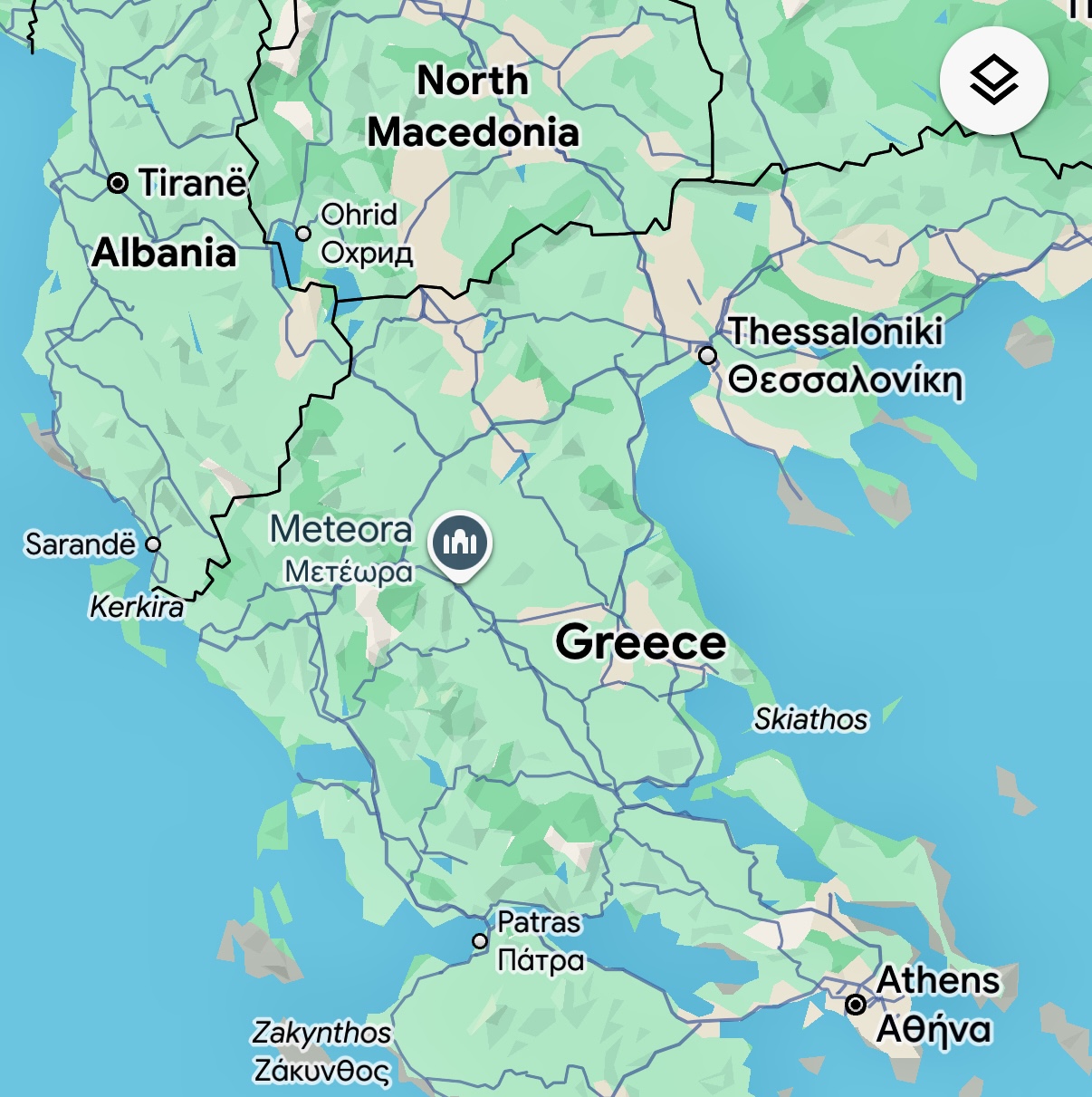
Thessaloniki is often called the northern capital of Greece
In true Greek fashion, Thessaloniki is a historical melting pot of modern culture and ancient civilizations: Macedonian, Hellenic, Roman, Byzantine, Ottoman, and Jewish.
Fifteen UNESCO World Heritage sites are sprinkled throughout the city, including early Christian and Byzantine monuments (over 50 churches and 40 monasteries). Plenty of ancient sites are in the city center, so it’s walkable for visitors.
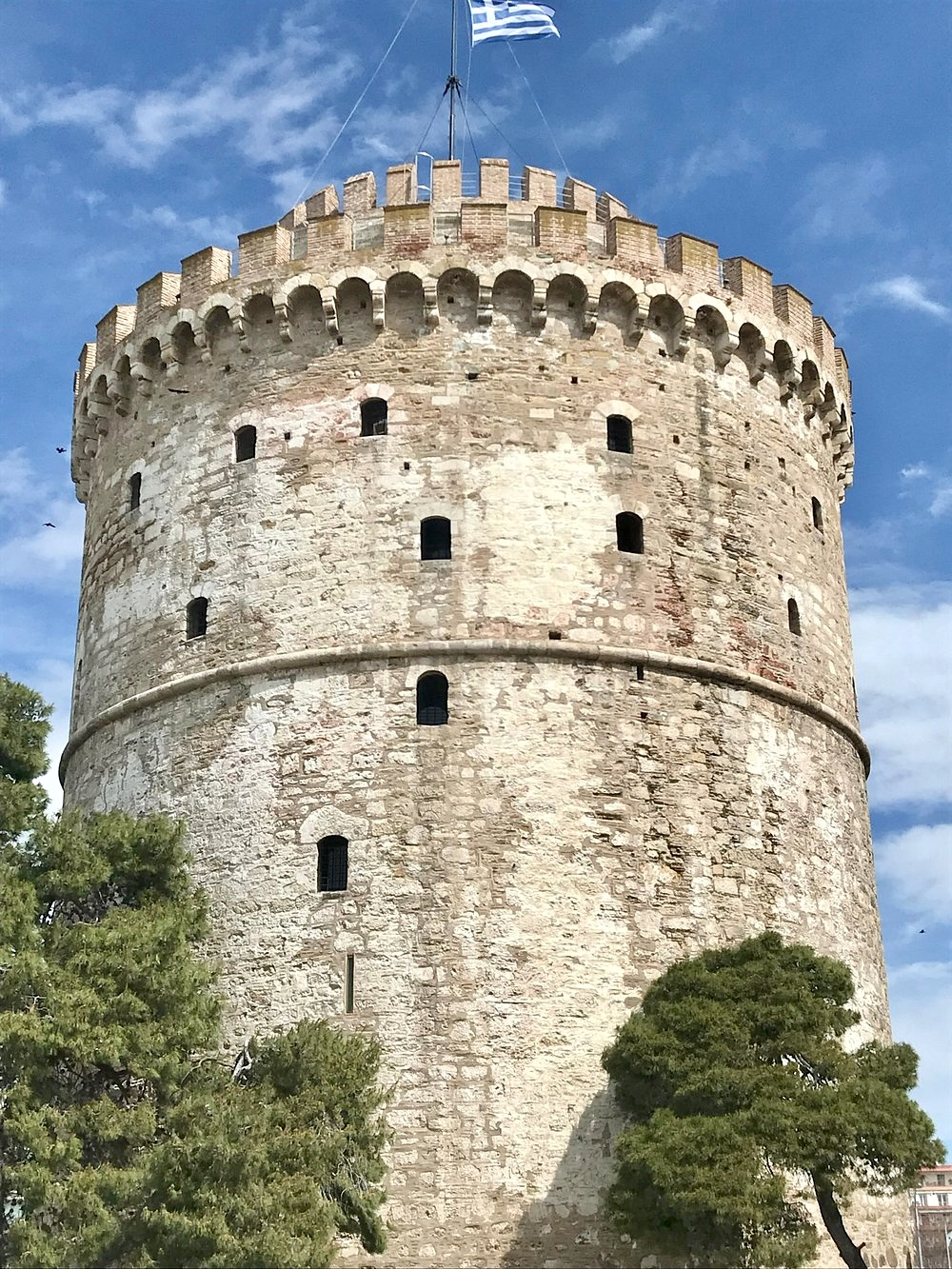
The White Tower is the symbol of the city
Drive up to the UNESCO World Heritage site acropolis for great views of Thessaloniki, bygone monuments, and nearly five miles of ancient walls.

Ancient walls built in the second century once surrounded the entire city.
More Options
Think about making Thessaloniki your home base when visiting nearby treasures in northern Greece:
- Mt. Athos – A Holy Mountain and home to the world’s largest Orthodox monastic community.
- Mt. Olympus – Beauty for nature lovers and rich in mythology as the home of the Greek gods.
- Pella – The birthplace of Alexander the Great and once the capital of the Kingdom of Macedon.
- Vergina – Where King Philip II of Macedon was assassinated and the location of the famous Royal Tombs.
- Philippi – A well-preserved archaeological site and the first Christian congregation in Europe. Also the site of the famous Battle of Philippi where Mark Antony and Octavian defeated Brutus and Cassius. My blog: A Day Trip to Ancient Philippi, Greece
H I S T O R Y Spotlight
Originally called Thessalonica, the city was founded around 315 BC by King Cassander of Macedon and named after his wife, princess Thessalonike. She was the daughter of King Philip II and the half-sister of Alexander the Great. Unfortunately, King Cassander–once a general in Alexander the Great’s army–was a bitter rival of both Philip and Alexander.
In 168 BC, Rome took control of the city. Romans also took advantage of the major crossroads and the Aegean Sea harbor. The Via Egnatia (a Roman road built between 146 and 120 BC) still runs right through the city. In 41 BC, Thessalonica became a self-governing “free city” of the Roman Republic under Mark Antony.
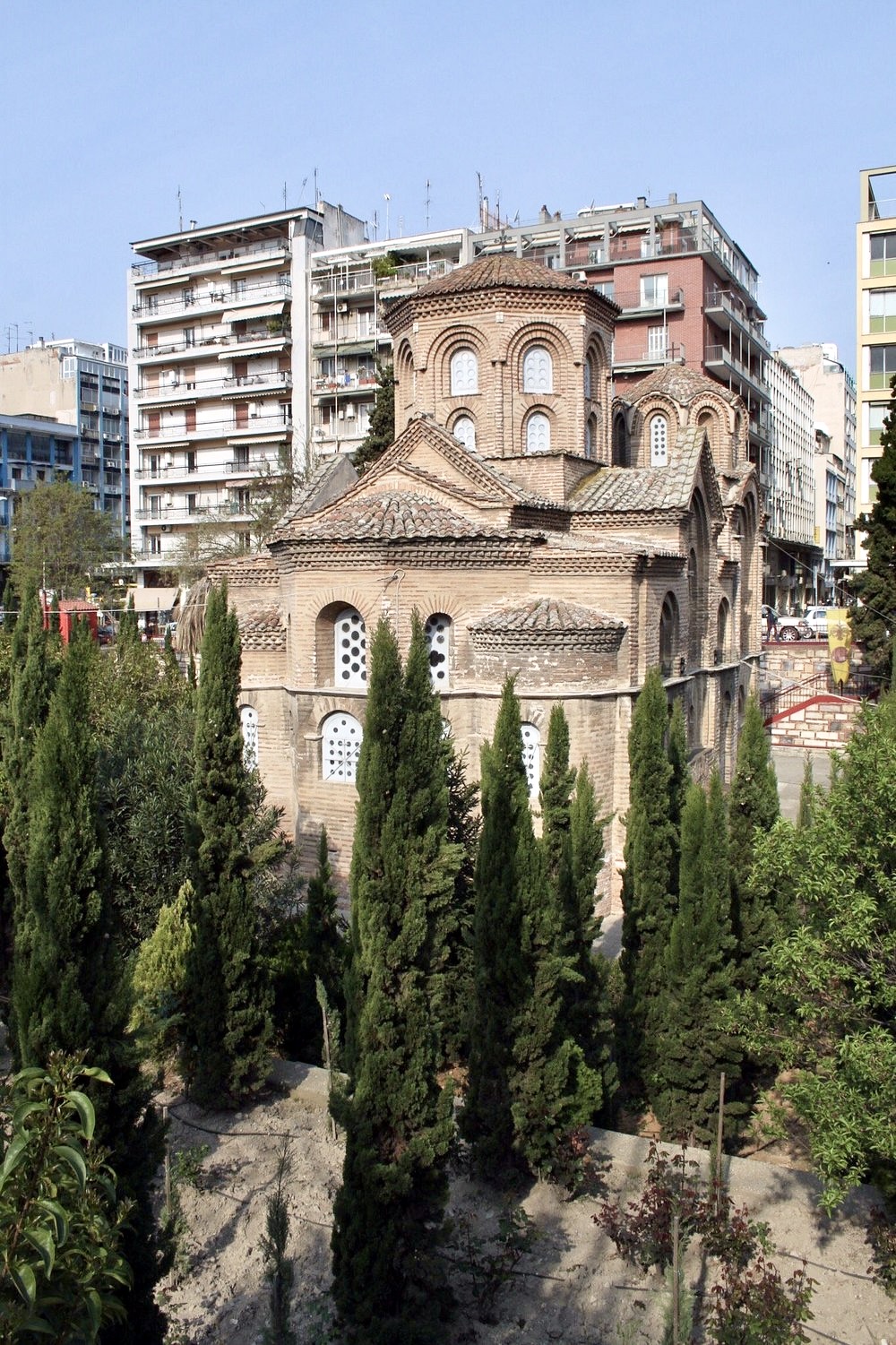
Church of Panagia Chalkeon (1028 AD) – Ancient monuments and ruins are surrounded everywhere by urban development.
After Emperor Theodosius I converted to Christianity, he issued the Edict of Thessalonica (380 AD) which ended the worship of all pagan gods. A thousand years later, Ottoman Turks took control of Thessaloniki (1387) and ruled for centuries.
After more than 20,000 Jews banished from Spain were relocated to the city in 1492, Thessaloniki was the only city in Europe with a Jewish majority from the 16th to the 20th century. In 1912, Thessalonica joined the Kingdom of Greece after it was liberated from Turkish rule in the First Balkan War.
A catastrophic fire burned much of Thessaloniki in 1917, and many monuments were destroyed and forever lost. The new city layout was designed by French architect Ernest Hébrard.
During the WWII Nazi occupation in 1941, Thessaloniki was forever changed when more than 50,000 Jews were deported to death camps in Auschwitz, Poland. The once thriving Jewish community has never recovered from the Holocaust.
Waterfront: The White Tower and Aristotle Square
If walls could talk, I bet the city’s most famous landmark would have much to say. The White Tower, originally called the Lion Tower (or Blood Tower), is probably the most recognized spot in Thessaloniki. Climb to the top for panoramic views!
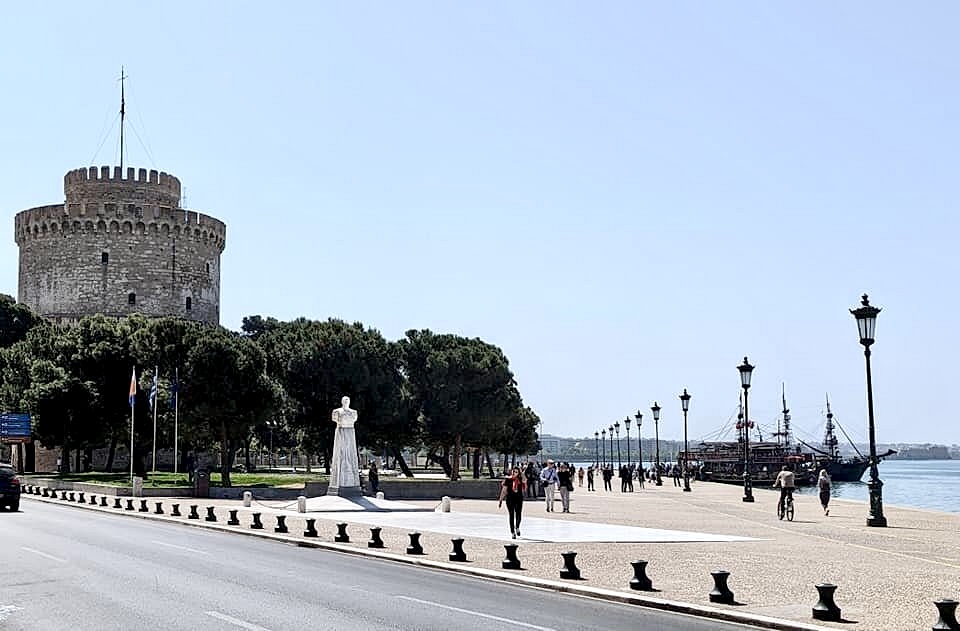
The six-story defensive fortress was most likely built in the early 1500s to guard the eastern area of the port. It’s the only seacoast fortress left of three. Through the years, it served as a prison and place for executions, a communication tower for air defense during wars, a storage for priceless art, and a meteorological laboratory.
When a convict white-washed the tower in exchange for his freedom in 1896, it was renamed “the White Tower.” Today it is part of the Ministry and Museum of Byzantine Culture and an education exhibit center dedicated to the history of Thessaloniki. https://www.lpth.gr
Aristotle Square is named after the famous Greek philosopher and is the city’s main gathering place. The popular seaside square is bustling with restaurants, shops and cafes.
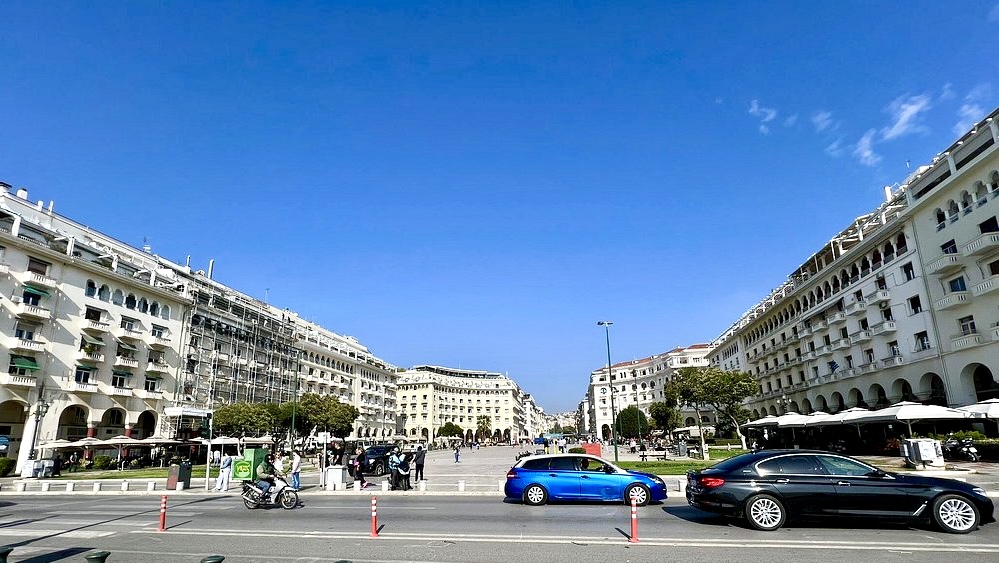
Architect Ernest Hébrard designed the massive square after the great fire of 1917.
Arch of Galerius, the Rotunda of Galerius, and Galerius' Palace
The ancient triumphal Arch of Galerius next to the Roman Via Egnatia was built in 304 AD to commemorate Roman Emperor Galerius’ victories over the Persians in 297 AD. It was once the city’s main gate, and locals call it Kamara.
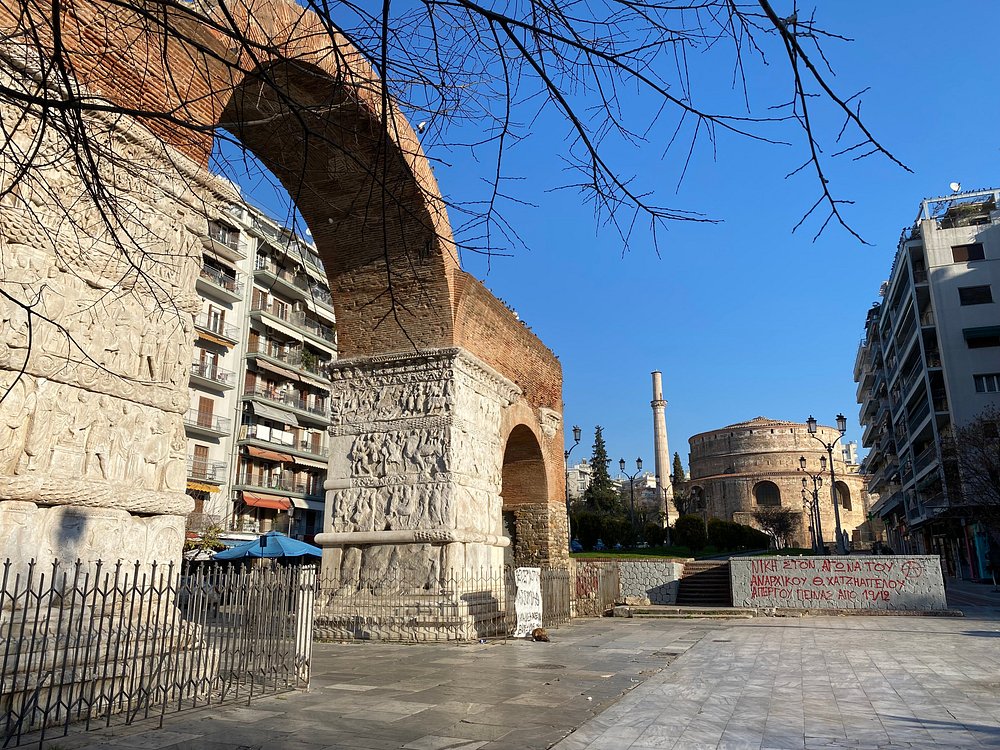
Remains of the Arch of Galerius and Rotunda
Named a UNESCO World Heritage Monument in 1988, the nearby Rotunda of Galerius is today known as the Church of St. George. Emperor Galerius commissioned the domed building to look like Rome’s Pantheon, and it was probably intended to be his mausoleum.
Visitors flock to see the 4th century dome, mosaics of saints inside the church, and St. George (the dragon slayer) above the main door outside. The rotunda was made into a church when Christianity became the official religion in 380 AD. The Ottomans made it a mosque, but after 1912, it returned to being a church.
You can see the ruins of Emperor Galerius’ palace near these two monuments. It was closed for restoration when we visited but is now open. Visit Arched Hall for exhibits and photos of Emperor Galerius’ palace, rotunda and arch.
Roman Forum and Greek Agora
The remains of an ancient Roman Forum built over a Greek Agora (60 BC) were discovered in 1963 when the city began excavating this square to build a courthouse. Local residents can sit on their balconies with a view of Thessaloniki’s history!
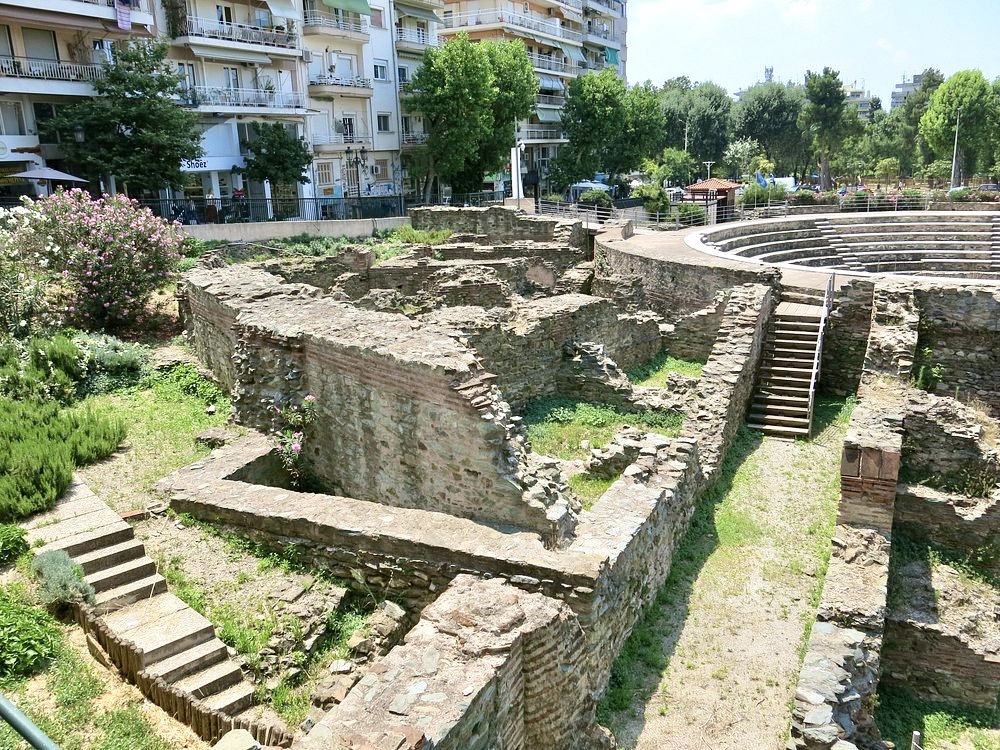
The restored Odeon theatre hosted musical contests and gladiator games.
The rectangular ancient forum was a public and commercial marketplace from the 1st to the 4th centuries with streets, shops, fountains, stoas, and baths. In 2011, a museum featuring Roman and Greek artifacts opened here.

Roman and Greek ruins
Ano Poli - The City Above the City (Upper Town)
We drove around Thessaloniki’s highest and scenic upper town and explored the city-above-the-city, Ano Poli. We also tried to find a restaurant. . . which did not work out well!
Ano Poli is the oldest part of Thessaloniki and the only part of the city that did not burn in the 1917 fire. You’ll find ancient walls, monuments, churches, colorful half-timbered houses, mansions, and a labyrinth of very steep streets.
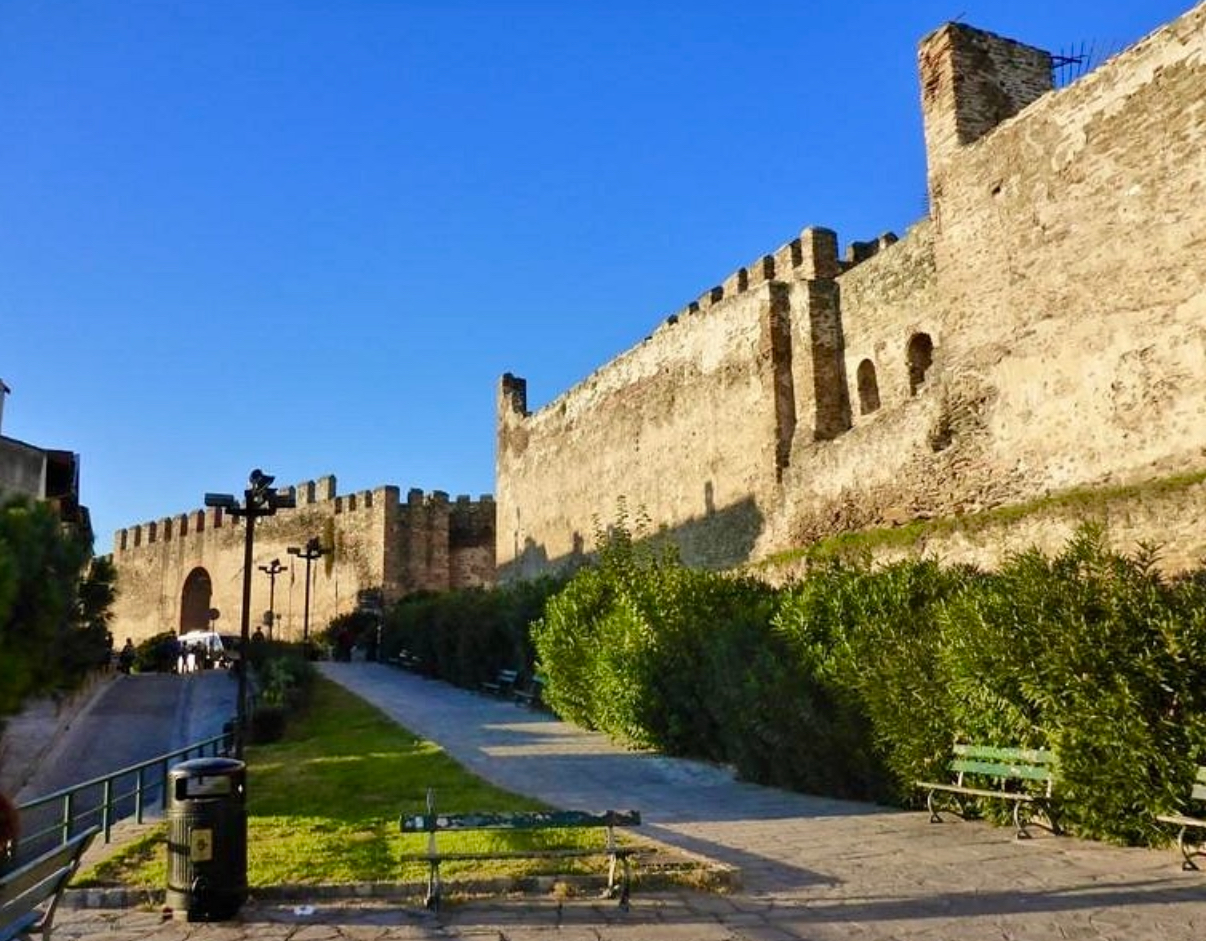
The acropolis is dominated by 2nd century walls still intact and the medieval Heptapyrgion — The Fortress of the Seven Towers. The Byzantine fortress (actually ten towers) became an Ottoman fort and Turkish prison, called Yedi Kule, which remained open until 1989. Archaeologists have been working at the site since the prison closed.
Trigonion Tower (or Triangle Tower) was built as a fortress observatory and used as an armory. The views are still great, and locals call it the “balcony of Thessaloniki.” It’s free to visit but closed on Mondays. https://www.thessalonikitourism.gr
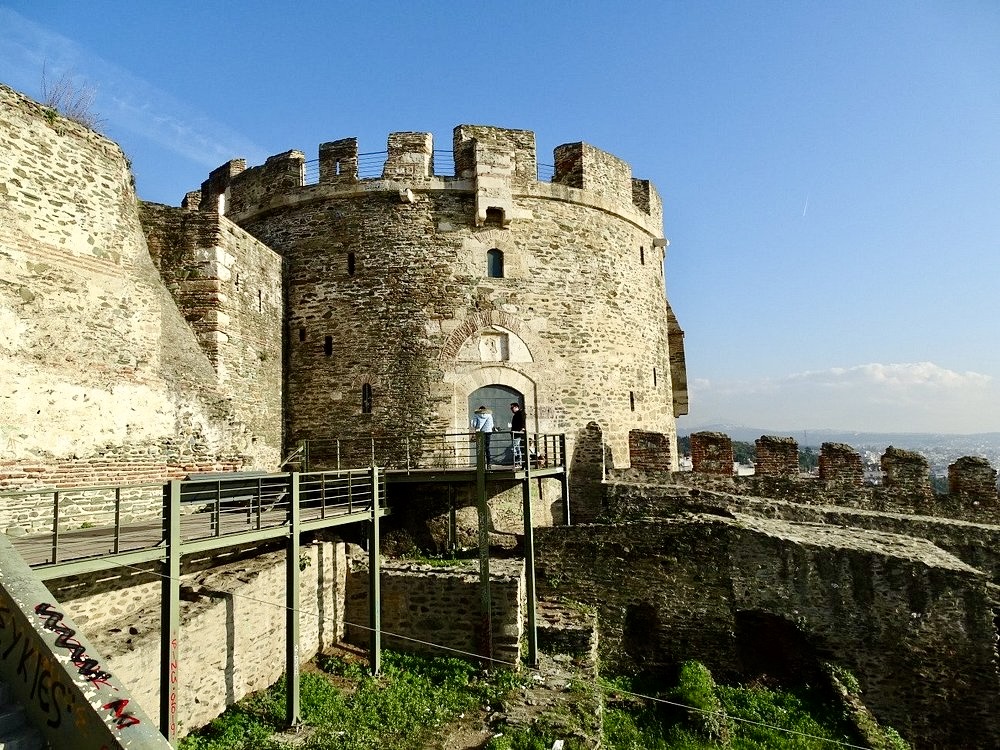
Triangle Tower
Another UNESCO World Heritage Site in the Upper City is the Vlatadon Monastery. Built over an early church, it is one of the oldest and most significant monuments believed to have been founded on the place where the Apostle Paul preached in 51 AD. It’s loaded with an impressive collection of manuscripts, sacred vessels, and historic relics.
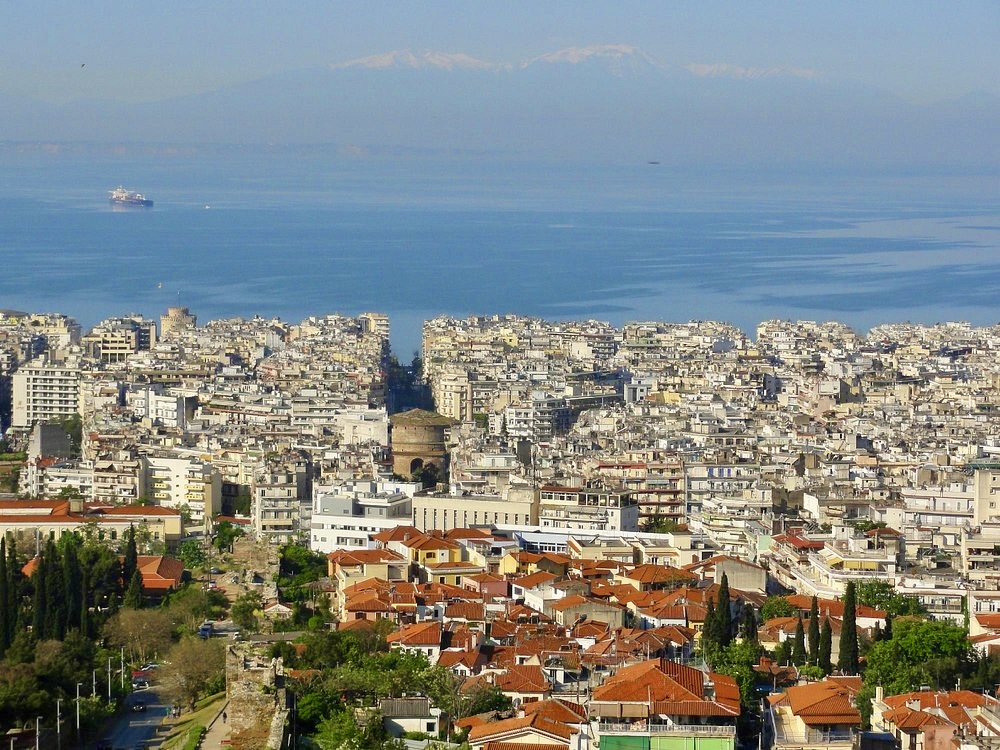
Ano Poli views of the sea, Rotunda, White Tower and even snow on Mt. Olympus in the distance.
The Apostle Paul in Thessalonica
A visit from the Apostle Paul, a Christian missionary from Tarsus, had a long-lasting influence on Thessalonica. He (together with students Silas and Timothy) shared and spread the Gospel to all of Macedonia and established a Christian community and church in the city during his second missionary journey.
The first written New Testament book is believed to be Paul’s first letter to the Thessalonians.
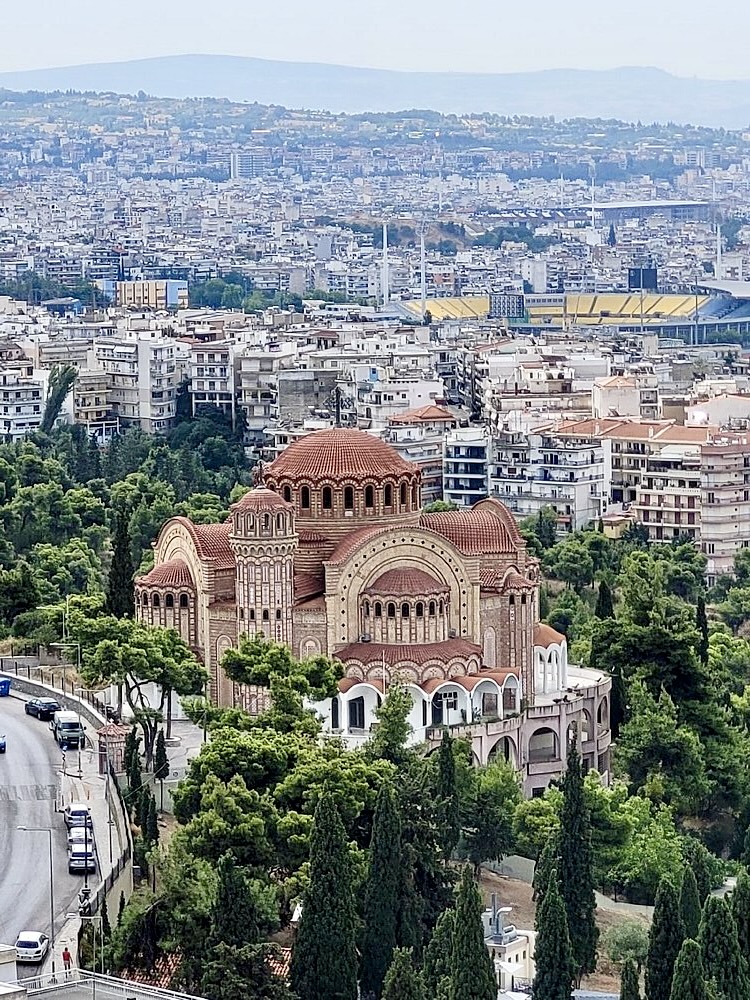
The beautiful Byzantine Church of Saint Paul the Apostle
The Apostle Paul and his companions arrived in Thessalonica in the first century (50-51 AD) on his second missionary journey. They were forced to leave Philippi quickly–after being beaten and imprisoned for disturbing the peace–and traveled (most likely walked) almost 100 miles to Thessalonica passing through Amphipolis and Apollonia.
Acts 17:1-15 tells us, “Paul found a Jewish synagogue and shared about Jesus the Messiah on at least three Sabbaths. Some were persuaded and joined Paul and Silas, as did a large number of God-fearing Greeks and quite a few prominent women.”
Eventually, some of the Jews became jealous, formed a mob, and started a riot. When they couldn’t find Paul or Silas, their next best option was to drag a man named Jason (who was hosting Paul at his home) and other believers before the city officials. They claimed Paul was preaching loyalty to another King ⇒ Jesus.
That very night, believers quickly escorted Paul and Silas out of Thessalonica to Beroea (now called Veria), a safer place. But the Thessalonica Jews also went to Beroea and stirred up trouble forcing Paul to leave northern Macedonia for Athens.
We know Paul visited Thessalonica multiple times (50-51 AD, 55 AD and 64-65 AD) and wrote two letters to the Thessalonians which are now in the New Testament.
The Patron Saint of Thessaloniki
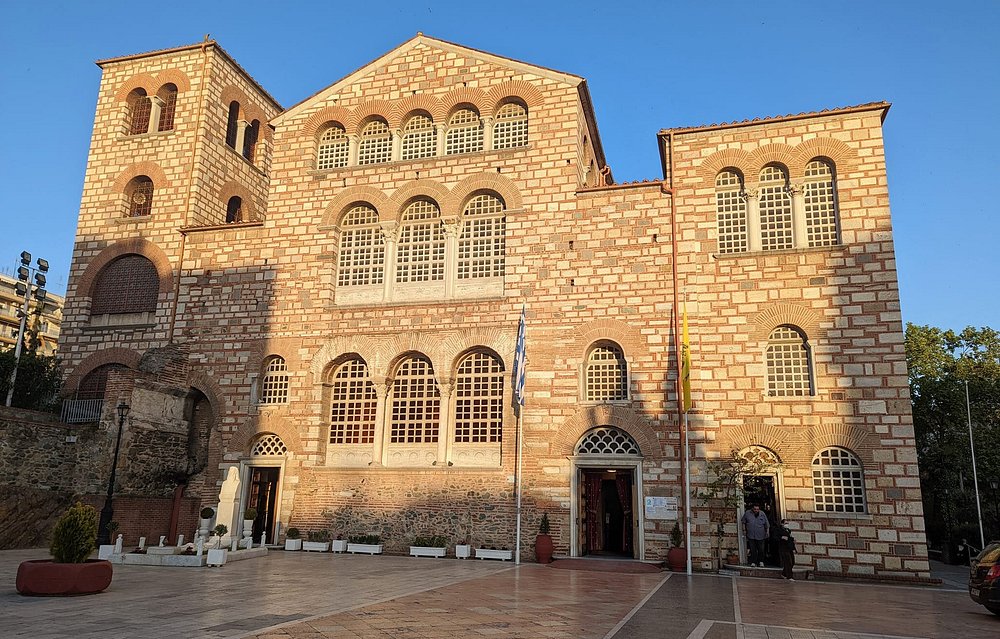
The Basilica of St. Demetrius
The Patron Saint of Thessaloniki and this church is dedicated to Demetrius, a high-ranking Roman army officer and soldier of Christ. He secretly spent his time as a devout missionary, preaching the Gospel and converting others to Christianity.
When he was captured, he admitted to Emperor Galerius that “he only believed in Christ.” Although he was sent to prison and tortured, he kept preaching the Gospel to other inmates and anyone who came to see him. In 303 AD, Demetrius gave a blessing to a gladiator named Nestor (Nestoras).
The emperor created a gladiator game as a duel between Christianity and paganism by challenging any Christian to a fight against a giant gladiator named Leo (Lyaios). Nestor, blessed by Demetrius, fought and killed Leo the gladiator. Furious, Emperor Galerius had Nestor immediately put to death. Then he had Demetrius executed by a spear in his cell on October 26, 306 AD.
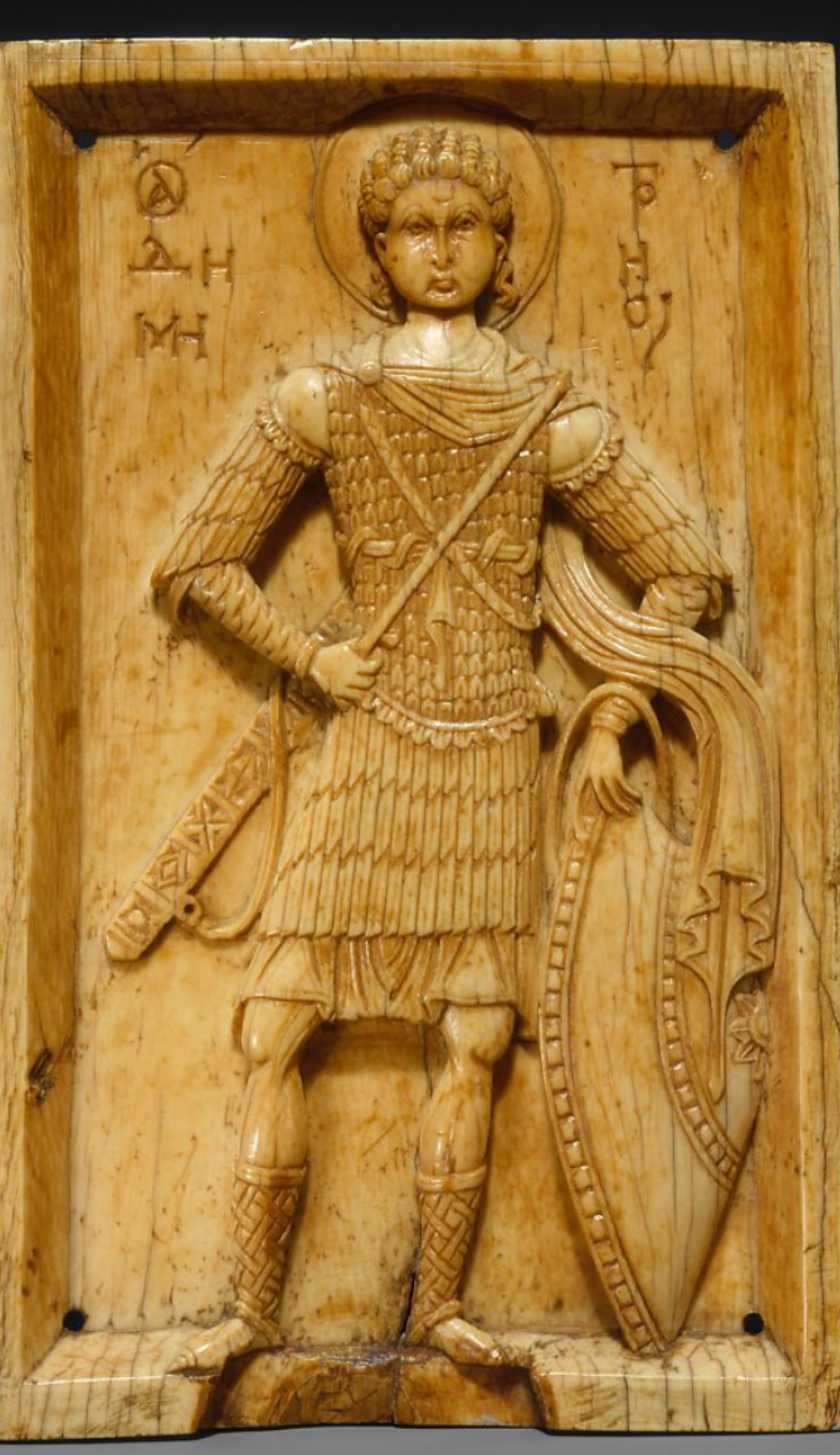
Byzantine icon of St. Demetrius carved from elephant ivory – Medieval Cloisters Collection at the New York City Metropolitan Museum of Art.
The first church dedicated to Demetrius was built in 313 AD over the area where Demetrius was martyred. It was rebuilt after an earthquake in the 7th century and reconstructed again (1926-1949) after the 1917 fire.
What did we get ourselves into?
Hungry? While in Greece’s gastronomic capital, we took a Mr. Toad’s Wild Ride through Ano Poli in search of Taverna Igglis, a restaurant serving up extraordinary food for over 100 years.
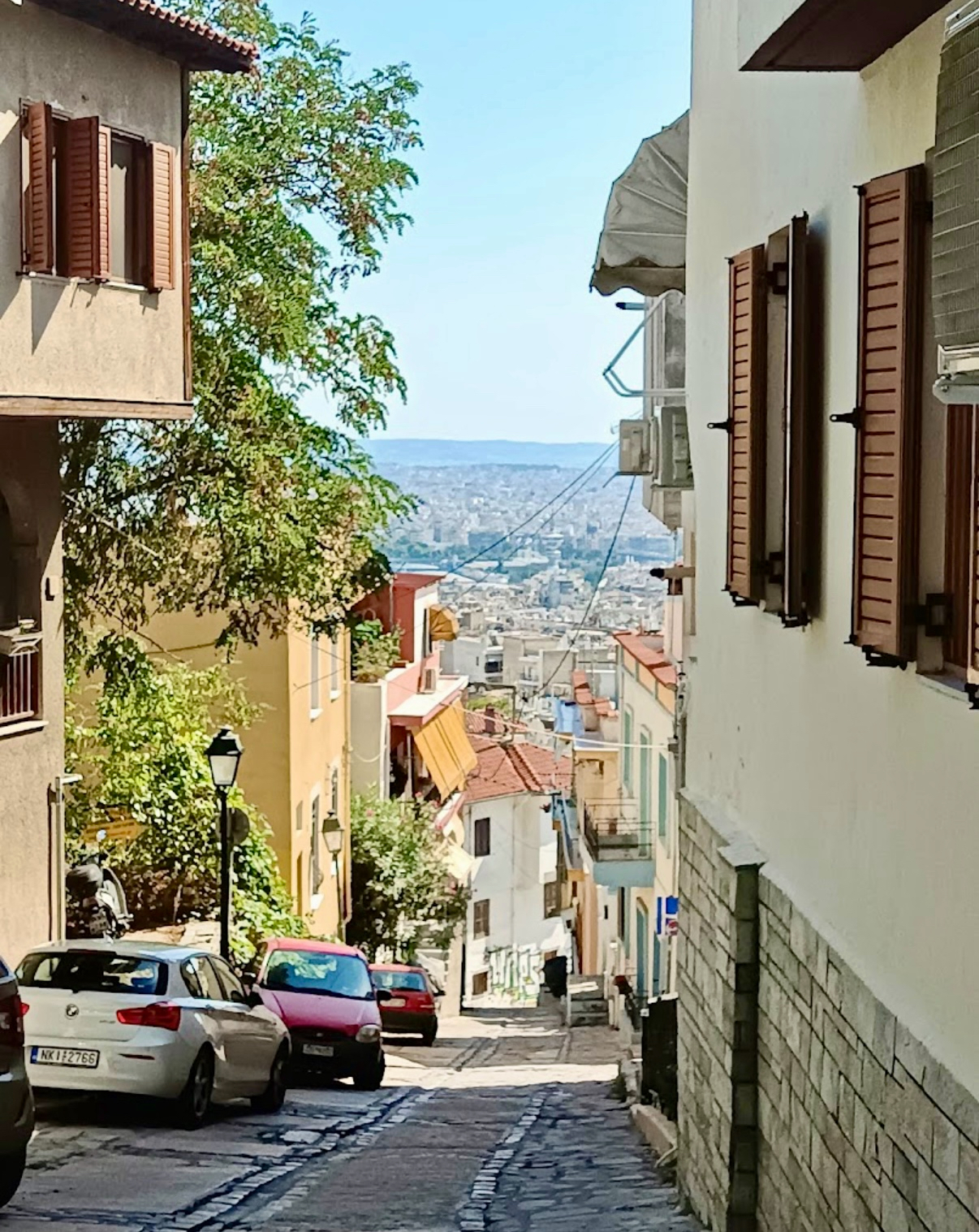
Allow me to give major props to my brother-in-law, Patrick, for navigating the narrow, steep cobblestone alleyways with cars parked on both sides. What looked possible on my Google maps was impossible to traverse that day.
As the road became more and more narrow, we found ourselves “wedged in” with nowhere to go and no parking spot in site. Somehow he backed up, turned around, and got us out of a frightening situation with no dents, scrapes or missing side mirrors.
We immediately gave up and found a restaurant AND BAKERY (for stress eating) in the lower city. Note to drivers: park your car somewhere else and walk to Taverna Igglis! Let me know if you’ve eaten there!
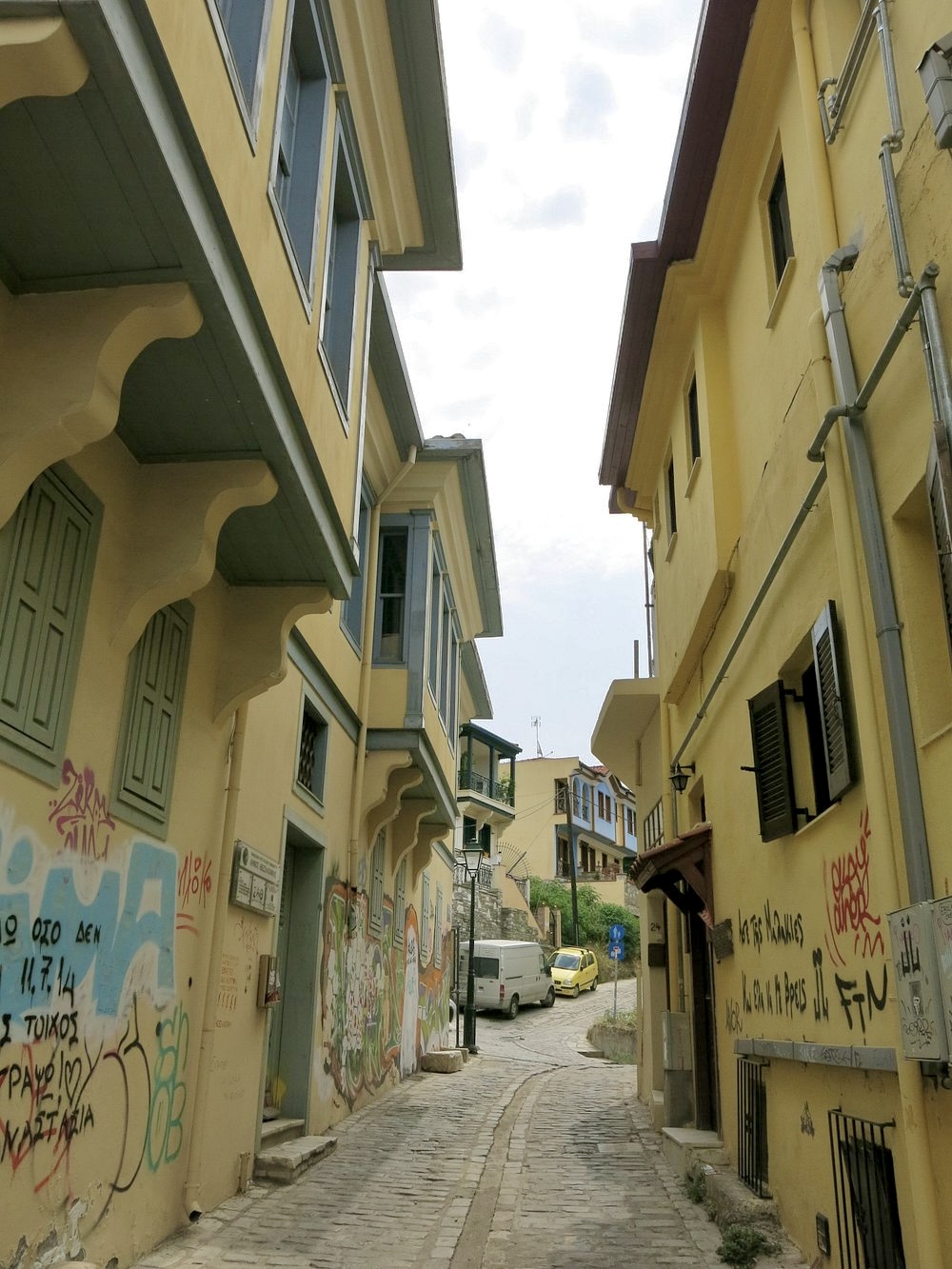
Ano Poli houses and narrow alleys (which looked easy to maneuver early on)
FYI and What's Next?
TIP: Almost all monument sites and museums in Thessaloniki are closed on Monday. Also, visit churches in the morning as most close at noon.
It was, however, good to have a car in Thessaloniki. We were surprised at the number of sites we could see simply driving through the city. On the other hand, be ready for a challenge when looking for a parking place!
If you rent a car anywhere in Greece, you’ll need to get an International Driver’s Permit (IDP) before you go. Our permits were purchased at AAA Travel. And don’t forget travel insurance! http://www.aaa.com

Even though we had only a few hours in Thessaloniki, I left wanting to see more! This was our longest day on our journey through Greece.
That morning, we drove to the archaeological site of Philippi from Meteora. We then drove to and explored Thessaloniki, and we still had a three-hour drive to be halfway to our next destination. My sister-in-law and I were grateful our husbands did all the driving!
What’s next? We’ll head south to the Peloponnese peninsula and visit the ancient city of Corinth!
Until then, keep exploring!
Check out my other Greece series travel blogs:
A Day Trip to Ancient Philippi, Greece
Meteora Monasteries – A Climb to the Top!
Magnificent Meteora – Castles in the Clouds
Delphi, Greece – It’s Still a Mystery
Olympia, Greece – The Birthplace of the Olympics
Athens, Greece – The Acropolis
Santorini, Greece – Off the Beaten Path
For all travel blogs, visit my blogsite: https://traveltipsbytami.com
Tami,
Once again, you are very thorough and informative as you share travel information. Thank you for including your personal experiences throughout this blog! I love reading your blog and tips.
I look forward to the next edition of your travel tips.
Jeanne
Thanks Jeanne!
Tami,
Again very thorough about where we visited together. I love your detail about the city and the history.
Patrick
It was a great trip! And, again, thank you for navigating us through my somewhat-crazy travel agenda!